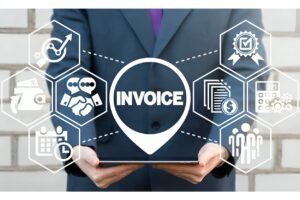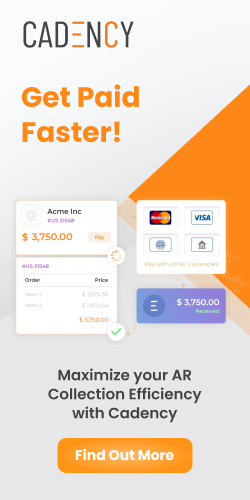Dealing with non-paying clients can be frustrating and time-consuming for your AR team. Especially since late or missed payments can cause cash flow problems and put a strain on your resources. By taking a proactive approach, you can minimize the financial and emotional impact of non-paying clients on your staff and your business. This article will explore various strategies you can implement to effectively manage non-paying clients.
In this article
Before we look at the strategies, let’s look at some of the reasons why clients may miss a payment.
Reasons Why Clients Don’t Pay On-time
Gaps in Communication
After issuing an invoice to a client, receiving payments in a timely fashion is important for your business. But if the due date is not for another 30 days and there are no further communications between you and your client, this can easily be forgotten. When there is no immediate call to action, things get put in a to-do pile. Further compounding this, in many instances the person paying the invoice may not necessarily be the person that made the purchase or used the service. If there are internal gaps in communication, these can be contributing factors for missed or late payments.
Financial Strain
When clients have low cash flows and are experiencing financial strain, this may prevent them from meeting invoice due dates. A strain on financial resources means that businesses have to prioritize which invoices get paid and unfortunately, that may mean that yours gets missed.
Disputes About the Quality of Work
When clients are dissaftisfied with the quality of work or service they received, they may stall paying their invoice. They may feel that the work done does not meet the agreed upon standards, and as a result, may refuse to pay the full amount owed. If resolutions are not quickly achieved, disputes can lead to non-payments.
Missing Invoices
Paper-based invoices that are delivered in the mail can take time getting to the addressee. Unfortunately if the invoice arrives late or not at all, this can result in missed or late payments. Similarly, a missed email in a flooded inbox can easily be the reason that a payment is not made. This can happen when invoices are sent to a general inbox.
Inconvenient Payment Options
If the payment options that you offer are not convenient for your client, this may be a contributing factor to why they are late with payments. Despite being in the digital age, paying by paper checks is still a reality for many businesses. But is this convenient for your customers?
Strategies that Support On-Time Payments
Preventing late payments is part of the equation for maintaining a healthy cash flow for your business. Here are some steps you can take to minimize late payments from your clients:
1. Offer incentives for early payment
Offering rewards points, discounts or additional services for early payment encourages clients to pay on-time, since they feel like they are also gaining something out of the process. Feeling appreciated and rewarded for their efforts further helps to strengthen the client-business relationship. When clients feel valued, this increases their trust and loyalty to your brand. Offering incentives creates a supportive environment for on-time payments where both you and your client benefits.
2. Set clear payment terms
Establishing clear payment terms with clients allows for an upfront understanding of your expectations and supports more on-time payments. Being transparent at the outset will help to reduce misunderstandings and future disputes.
To establish a comprehensive payment policy, you should include details such as payment due date, late fees or interest rates for late payments, accepted payment methods, and the consequences of missing a payment.
Due date: Establish the date by which payment must be made, e.g. due on delivery, within 30 days of invoice, or on a specific date agreed upon by both parties.
Payment methods: Specify which payment methods you will accept (e.g. cash, check, credit card, wire transfer etc… )
Late payment fees: Decide if there will be a fee for late payments, and if so, what the amount will be and when it will be applied.
Partial payments: If partial payments are allowed, specify the amount, due dates and conditions for making these payments.
Invoicing: Determine the frequency and format of invoicing, including whether electronic invoicing will be accepted.
Payment Security: Consider any security measures that need to be in place to protect against fraudulent payments.
The Cadency Promise to Pay feature, can help you keep track of payment terms and follow up on missed payments with ease, thereby streamlining your cash flow management and ensuring that you meet your financial obligations.
3. Understanding the root cause of non-payment
The non-payment of an invoice can occur due to some of the reasons we mentioned earlier. Clients may be experiencing a lack of funds, they may be disputing an invoice or they simply could have forgotten. Understanding the root cause of the missed payment can help you to appropriately address the issue. In the instance where a non-payment is due to a lack of funds, you can offer a payment plan to help your client repay their debt over time. On the other hand, if the non-payment is due to a dispute over the goods or services provided, you would need to gather evidence to prove the validity of their claim and engage in negotiations to resolve the issue. Understanding the reason why a payment is late can help you to respond in a manner conducive to receiving a payment.
4. Clear communication and documentation
Clear communication with your clients can help you get paid on-time. Providing clients with payment reminders in advance of due dates can help to keep invoices top of mind and support timely payments. Clear communication and documentation both between a client and a business and among the various teams in a business, can reduce the confusion that sometimes happens when the team that issues the invoice is not the same team that is collecting the payment. Transparency among teams fosters a positive business environment and improves the customer experience that is offered which further supports customer loyalty and trust.
5. Alternative dispute resolution methods
Alternative dispute resolution (ADR) methods are used for resolving disputes in a less formal manner.
Some common ADR methods include:
Mediation: This is a process where an impartial third-party mediator helps the parties involved in a dispute to reach a mutually acceptable agreement.
Arbitration: In this process, an impartial third-party arbitrator makes a binding decision after hearing evidence and arguments from both parties. The decision of the arbitrator is usually final and binding and can be enforced by the courts.
Conciliation: It refers to a process similar to mediation, but with a more active role for the conciliator, who provides their own recommendations for resolving the dispute.
Early Neutral Evaluation: A process where a neutral evaluator provides an early assessment of the merits of the case to help the parties reach a settlement or make informed decisions about further litigation.
Final Word
Whether it’s through clear communications, setting payment expectations, or exploring alternative payment options, there are different strategies you can implement to handle and manage non-paying clients effectively. Cadency, the new AR automation platform by Datasoft has useful tools that can support you to get paid on-time. To learn more about the features that Cadency offers, visit us at cadency.global/features






